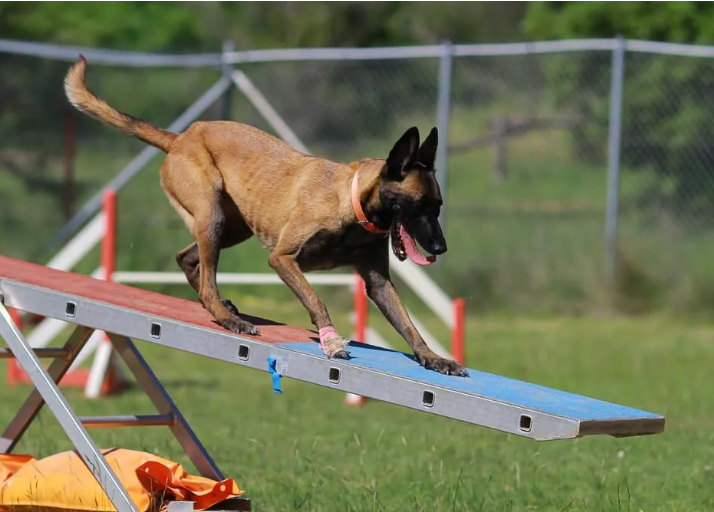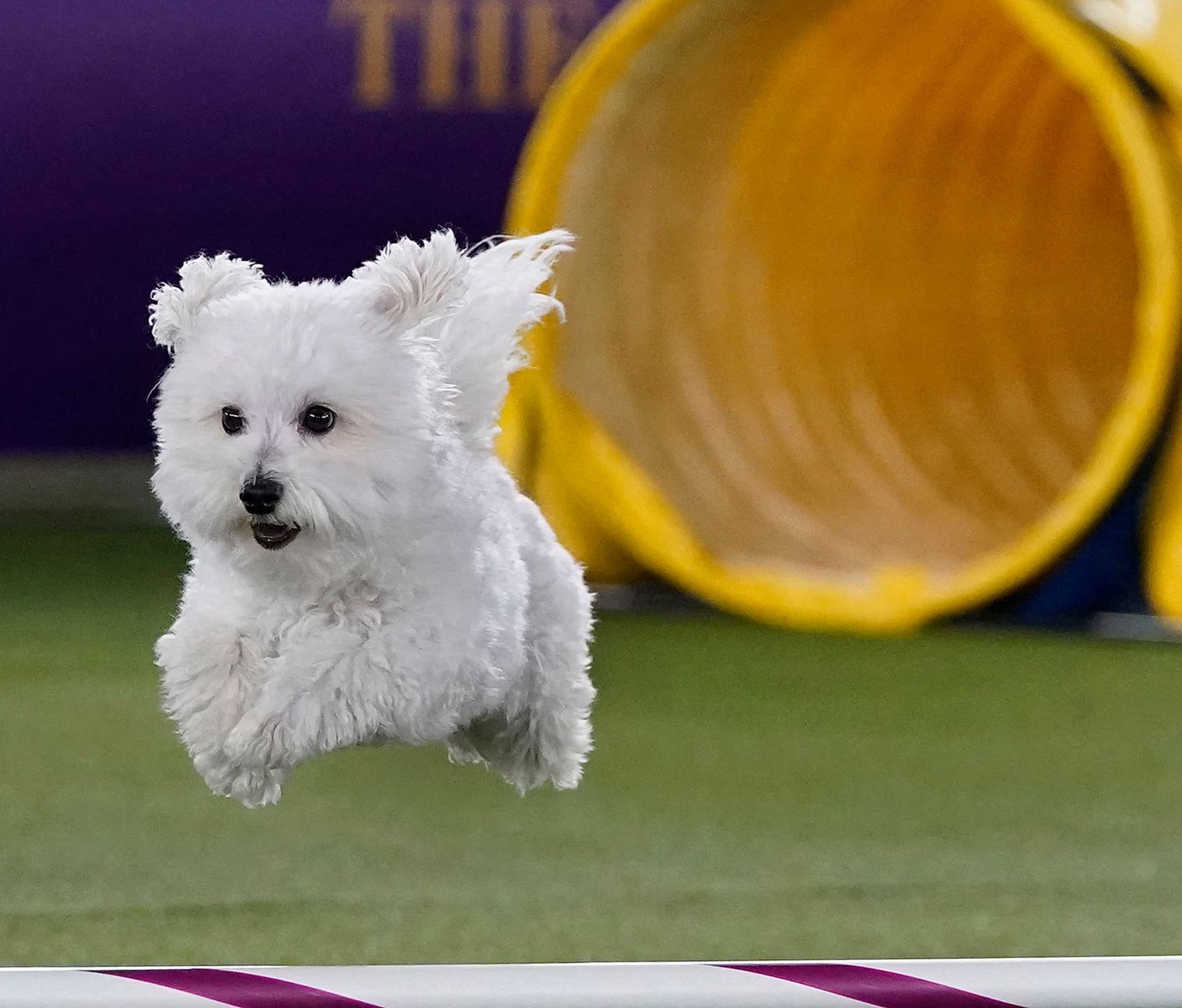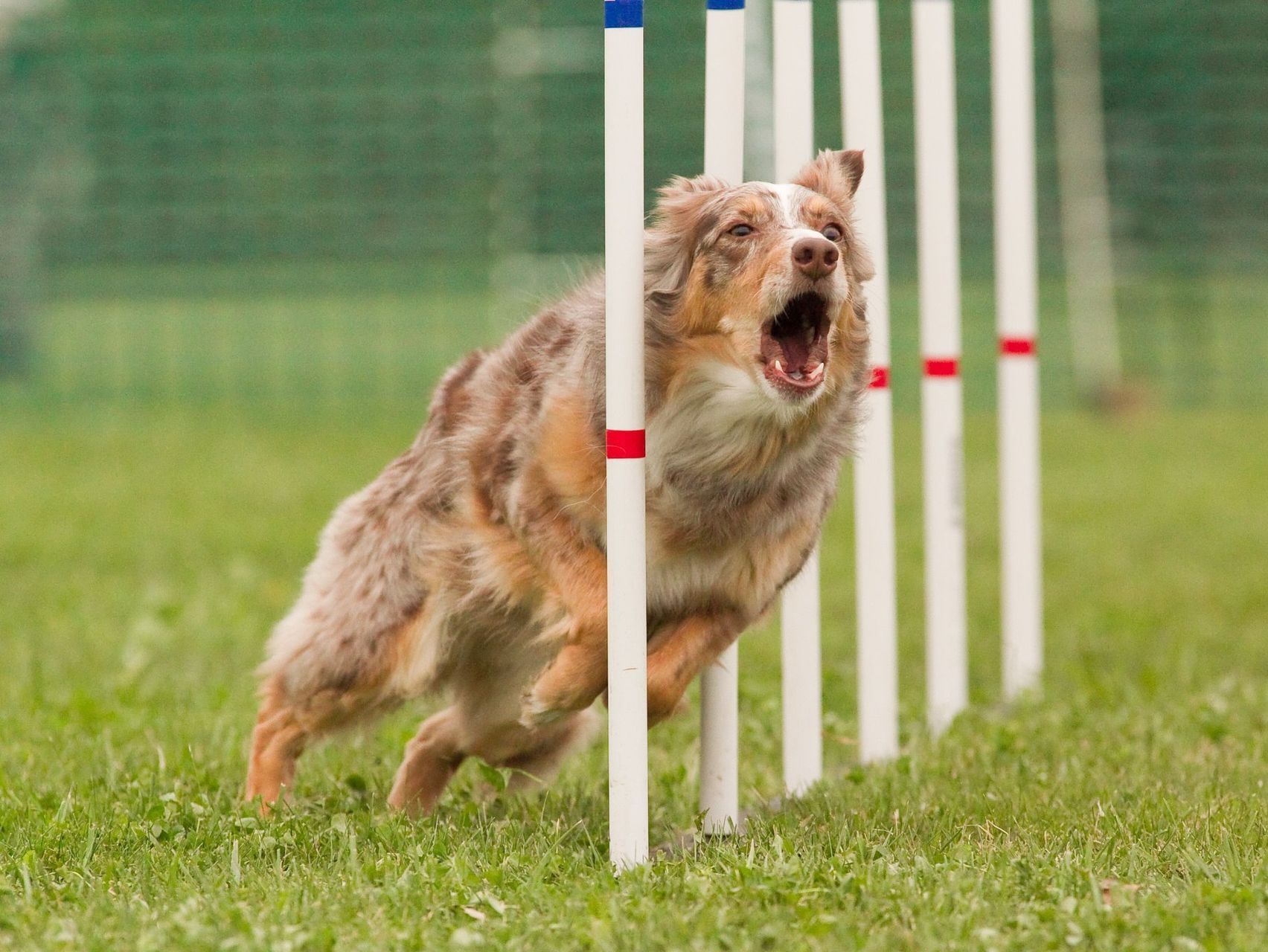Dog Obedience Training: Can You Teach An Old Dog New Tricks?
Positive Dog Training Has No Age Limit
The expression “You can’t teach an old dog new tricks” has created a stigma around senior dogs and their ability to grasp newly taught behaviors and tricks. While this phrase has warped the perception towards older dogs, the truth is old dogs can in fact learn new tricks and it is a great kindness that you should teach old dogs new tricks. There are no limits to what you and your dog can do, but understanding inevitable behavior changes in an older dog will improve the quality of training your dog receives.
As a dog ages, their behavior will change as their body adapts to older age. This does not mean they will experience a radical change in personality, but some common behavior changes in older dogs can affect their training. Older dogs slow down as they age, just as people do. Slowing down affects training in the sense that they have less energy so they may not be able to practice tricks for as long or perform other intense behaviors in rapid succession compared to a younger dog or puppy. A decreased appetite is also common for older dogs. While most (if not all) young dogs respond to treats as a positive reward for learning and practicing new behaviors, senior dogs are less likely to respond to treats due to low hunger levels. It is best to lead training sessions ahead of meals, when they are most hungry and responsive to the treat offered.
Training in a quiet place is preferred for an older dog. As a dog ages, they begin to develop fears of loud sounds due to their startled response to loud noises. This response causes the dog to react with sudden movement, which can be painful for their aging body. Older dogs begin to associate their pain with the loud sound and then become scared of such noises. Pain and soreness in senior dogs will influence how quickly they respond to cues or whether they respond at all. Eliminate behaviors you want to teach that may cause discomfort for your dog. Teaching them to go to their bed, to lift a paw, or to place their head on your lap may be easier for them to learn.
Speak With A Dog
Training Expert
Speak With A Dog Training Expert
Thank you for contacting us!
We will contact you shortly!
Please try again later.

Positive Dog Training Has No Age Limit
The expression “You can’t teach an old dog new tricks” has created a stigma around senior dogs and their ability to grasp newly taught behaviors and tricks. While this phrase has warped the perception towards older dogs, the truth is old dogs can in fact learn new tricks and it is a great kindness that you should teach old dogs new tricks. There are no limits to what you and your dog can do, but understanding inevitable behavior changes in an older dog will improve the quality of training your dog receives.
As a dog ages, their behavior will change as their body adapts to older age. This does not mean they will experience a radical change in personality, but some common behavior changes in older dogs can affect their training. Older dogs slow down as they age, just as people do. Slowing down affects training in the sense that they have less energy so they may not be able to practice tricks for as long or perform
Speak With A Dog
Training Expert
Speak With A Dog Training Expert
Thank you for contacting us!
We will contact you shortly!
Please try again later.
other intense behaviors in rapid succession compared to a younger dog or puppy. A decreased appetite is also common for older dogs. While most (if not all) young dogs respond to treats as a positive reward for learning and practicing new behaviors, senior dogs are less likely to respond to treats due to low hunger levels. It is best to lead training sessions ahead of meals, when they are most hungry and responsive to the treat offered.
Training in a quiet place is preferred for an older dog. As a dog ages, they begin to develop fears of loud sounds due to their startled response to loud noises. This response causes the dog to react with sudden movement, which can be painful for their aging body. Older dogs begin to associate their pain with the loud sound and then become scared of such noises. Pain and soreness in senior dogs will influence how quickly they respond to cues or whether they respond at all. Eliminate behaviors you want to teach that may cause discomfort for your dog. Teaching them to go to their bed, to lift a paw, or to place their head on your lap may be easier for them to learn.


How to Obedience Train Your Older Dog
Training your older dog to respond to basic commands and knowing how to do so allows you to build a stronger bond with your dog as well as reap the benefits of the effort it takes. To achieve the goal of “teaching an old dog new tricks,” use positive reinforcement. Set your dog up for success by arranging the environment so your dog is not doomed to fail from the start. Begin with what’s easiest for your dog to learn, and train for short periods multiple times a day. Multiple short sessions of 30 seconds to 3 minutes multiple times a day are far more effective. Older dogs may fatigue easily or feel full if you do too much training at once. Consistency is the key to training a dog of any age. This includes positive reinforcement, multiple short sessions, providing easy to chew treats, choosing a quiet environment, and exuding grace and patience. It
How to Obedience Train Your Older Dog
Training your older dog to respond to basic commands and knowing how to do so allows you to build a stronger bond with your dog as well as reap the benefits of the effort it takes. To achieve the goal of “teaching an old dog new tricks,” use positive reinforcement. Set your dog up for success by arranging the environment so your dog is not doomed to fail from the start. Begin with what’s easiest for your dog to learn, and train for short periods multiple times a day. Multiple short sessions of 30 seconds to 3 minutes multiple times a day are far more effective. Older dogs may fatigue easily or feel full if you do too much training at once. Consistency is the key to training a dog of any age. This includes positive reinforcement, multiple short sessions, providing easy to chew treats, choosing a quiet environment, and exuding grace and patience. It won’t go perfectly, and your dog will make mistakes, but that’s okay!
Training older dogs is not harder than training younger dogs. No matter their age, the goal is to teach your dog what you want them to do and reinforce them so they are glad they did it. Older dogs learn basic cues the same way younger dogs do: with lots of repetition and positive reinforcement. While an older dog may not have as much energy, this can be used to your benefit because they will have the focus that some younger dogs lack to learn a new skill. Some behaviors will come naturally to a dog, such as lying down, and some behaviors need shaping, such as learning to roll over on command. Capturing, rewarding, and positively reinforcing the behavior are powerful steps of training. Remember to be patient with your older dog and enjoy the process as they learn and build confidence in performing a new behavior or trick!
won’t go perfectly, and your dog will make mistakes, but that’s okay!
Training older dogs is not harder than training younger dogs. No matter their age, the goal is to teach your dog what you want them to do and reinforce them so they are glad they did it. Older dogs learn basic cues the same way younger dogs do: with lots of repetition and positive reinforcement. While an older dog may not have as much energy, this can be used to your benefit because they will have the focus that some younger dogs lack to learn a new skill. Some behaviors will come naturally to a dog, such as lying down, and some behaviors need shaping, such as learning to roll over on command. Capturing, rewarding, and positively reinforcing the behavior are powerful steps of training. Remember to be patient with your older dog and enjoy the process as they learn and build confidence in performing a new behavior or trick!
